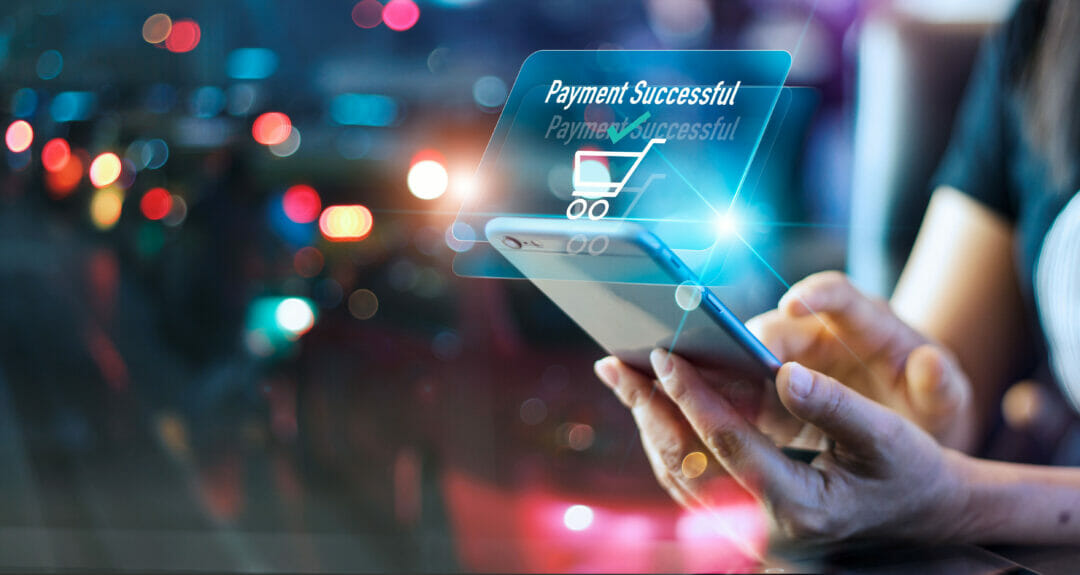Seismic shifts in shopping habits in 2020, as consumers looked to e-commerce for their everyday purchases, has resulted in an accelerated growth for payment providers: PayPal, for example, reportedly had one of its best years in history. With in-person retail largely suspended for most of the last year, it will come as no surprise that non-cash and digital transactions have been broadly adopted and are now on a fast-track path for growth. There is an opportunity for payment providers to really capitalise on this moment. In this article, we take a look at some of the current trends and challenges within the payment ecosystem, and explore how robotic process automation combined with cloud services can help payment providers to increase efficiency and security, and boost their return on investment.
Managing high volumes of customers
A higher volume of customers using online payment platforms – whilst great for business – does present the challenge of needing to onboard them quickly and easily. Onboarding in the payments and finance industry is a time-consuming process which requires extensive information and due diligence checks.
Robotic process automation (RPA) – traditionally utilised by businesses to execute mundane and repetitive tasks – can support providers in managing the increasingly high volume of users coming to their platforms. Customer onboarding consists of gathering key information about each individual in order to comply with KYC regulations, and is known to be a labour-intensive process that, although computerised, often requires additional manual review by employees. Introducing intelligent RPA into customer onboarding will enable employees to concentrate on delivering the best possible customer experience at this initial touchpoint, whilst bots handle the data gathering and input. A quicker onboarding process will also enable customers to transact quicker, thus accelerating revenue for payment providers.
The unique opportunity for Fintech in the payments space
Fraud, gambling and gaming
Since online payments and the use of digital wallets and platforms is booming, payment providers are facing an even greater challenge when it comes to the topic of security. Customer confidence in a payment product is critical, and ultimately comes down to how secure they feel using a particular app or platform.
Increased demand also inevitably leads to greater numbers of potentially both “risky” customers and merchants using the payment platform – the past year has seen a rise in online gaming and gambling, as traditional betting shops have been closed under Covid-19 restrictions. Mitigating and detecting fraud and protecting customers is not a new phenomenon for payment providers, but cases of this activity are currently on the rise.
Alongside smarter onboarding, automation can also provide an improved and more efficient screening process of new customers. RPA can dig deeper into users’ account and transaction history and flag potential causes for concern – such as suspicious logins, the country in which transactions are taking place, or the source of funds. By using RPA to confirm the suitability of users, payment providers can ensure their platforms are safe spaces to use and mitigate the risks that come with increased usership.
Organisations can also automate their fraud detection and anti-money laundering processes, enabling fraudulent behaviours to be exposed more quickly. Problematic behaviours within the platform can be monitored on a 24/7 basis, with no delay between detection and the blocking of accounts. RPA can also support employees to make increasingly informed decisions on fraud cases, by providing extensive information on the account and transaction in question, and automatically generating reports which outline suspicious activity. Experts in the automation space will also be able to highlight any gaps in providers’ AML and fraud processes.
How combining AI and humans can help to tackle cyber fraud
Processing refunds and chargebacks
Customers are far more likely to return an item if they bought it online, and online return rates have soared during the pandemic. For payment providers, this means coordinating and delivering large numbers of refunds and chargebacks – which traditionally, are a time consuming activity for a human workforce. By leveraging automation, payment providers will see an increase in the number of chargebacks being processed – a bot can perform a single refund transaction five times faster than an employee, and also work 24/7 to tackle the volume.
How cloud automation goes four steps further
For payment providers, engaging with a cloud-enabled automation services provider means that immense volumes of data can be edited, saved and retrieved from the cloud – on demand, at any time it is needed. This data is managed remotely by the cloud SaaS provider, offering a secure, reliable and cost effective option. Crucially, cloud services also ensure full data backup and proper disaster recovery, enabling business continuity in the event that something goes wrong.
1. Quick Start
Cloud technologies can enable payment providers to introduce automation to their processes more quickly and efficiently, since the vast majority of top automation platforms offer this technology as a software in cloud. Cloud-enabled services have reduced the barrier to entry, and any organisation can start benefiting from automation as a service without having to spend significant time in planning the upfront set-up, or paying fixed licences and fees.
2. Optimise infrastructure costs
Costs usually associated with establishing RPA and all forms of automation are minimised, since all aspects of maintenance – security patches, upgrades, and backup – are all covered by the automation cloud vendor. The big cloud service providers are compliant with some of the most demanding security standards across the industry, and so utilising cloud automation comes with the additional benefit of being more secure than in-house, standard infrastructure. Most automation vendors provide a strong multi-layered approach to security, including identity and access management, controls and audit logs, data encryption, incident response, and application security. With cloud automation, payment providers can focus on improving their process agility and innovation at almost a fifth of the infrastructure costs.
3. Scalability
Cloud technology enables businesses to scale without the need to upgrade on-premises infrastructure, offering payment providers immense flexibility and agility to deal with the peaks and troughs of demand. For example, if the automated process executes daily and takes approximately two hours, the payment provider would only need to cover the cost of the time that the virtual machine is up and running, as opposed to costs for dedicated on-premise infrastructure running 24/7. Cloud also allows for more open innovation and collaboration; automation vendors allow organisations to benefit from and utilise pre-built bots for re-use, allowing three times faster and scalable operations.
4. Democratisation of automation
In the early days of automation (between 2014 and 2019), only large organisations with a significant back office or FTE strength, and a large capital expenditure to spend, could embark on an automation journey. This was due to the upfront costs and fees associated with traditional automation. With the recent rise in cloud-enabled automation and automation-as-a-service, we have seen a massive democratisation of automation. Even smaller payment organisations and startups are embedding automation within their core operating model – not just to save on costs, but also increase productivity and use digital workers in order to scale operations and businesses more rapidly and effectively.
By engaging with RPA cloud services, businesses can remain a step ahead of the end user – and thus ahead of the competition. The key will be in efficiency and agility – those payment providers who can demonstrate a commitment to customer security, can swiftly onboard new users or merchants, whilst going above and beyond in the KYC or underwriting process, and quickly respond to suspicious behaviours, will carve for themselves a new era of growth in 2021 and beyond.








